This past summer, our director Scott Winterrowd took a work trip up to Montana to visit and document the sites where Charles Russell lived and worked.
Throughout the cowboy artist’s career, he was not always specific about the landscapes he painted as backdrops for his artworks. Instead, like many other artists, Russell would translate what he saw through his artistic lens and his own way of looking at the world. Often, the resulting landscape would be a compression of the vast spaces of “Big Sky” country.
One of the main points of inspiration for Russell was in what is now known as Glacier National Park. Charlie and his wife (and manager) Nancy purchased some land in that region of Montana near Lake McDonald in 1905 (before the establishment of the national park), and the following year they built their cabin within the wilderness of a dense old growth forest and named it Bull Head Lodge. From 1906 until Charlie’s death in 1926, the Russell’s spent their summers at the cabin, which remains in private hands today.
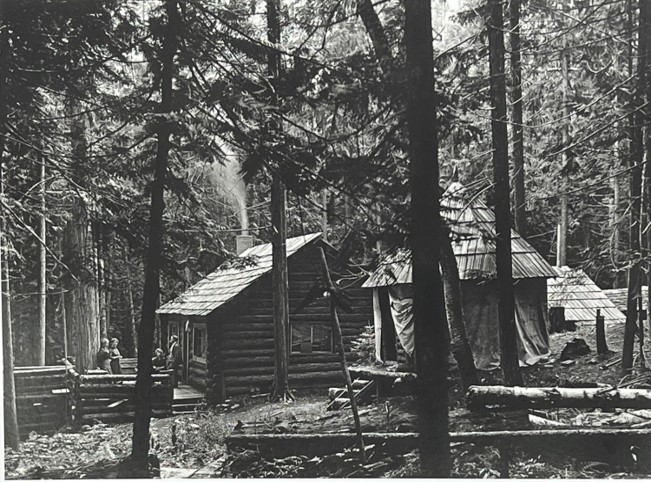
The Russells at Bull Head Lodge, 1919, Helen E. and Homer E. Britzman Collection, D.4.325, Gilcrease Museum Archives, University of Tulsa
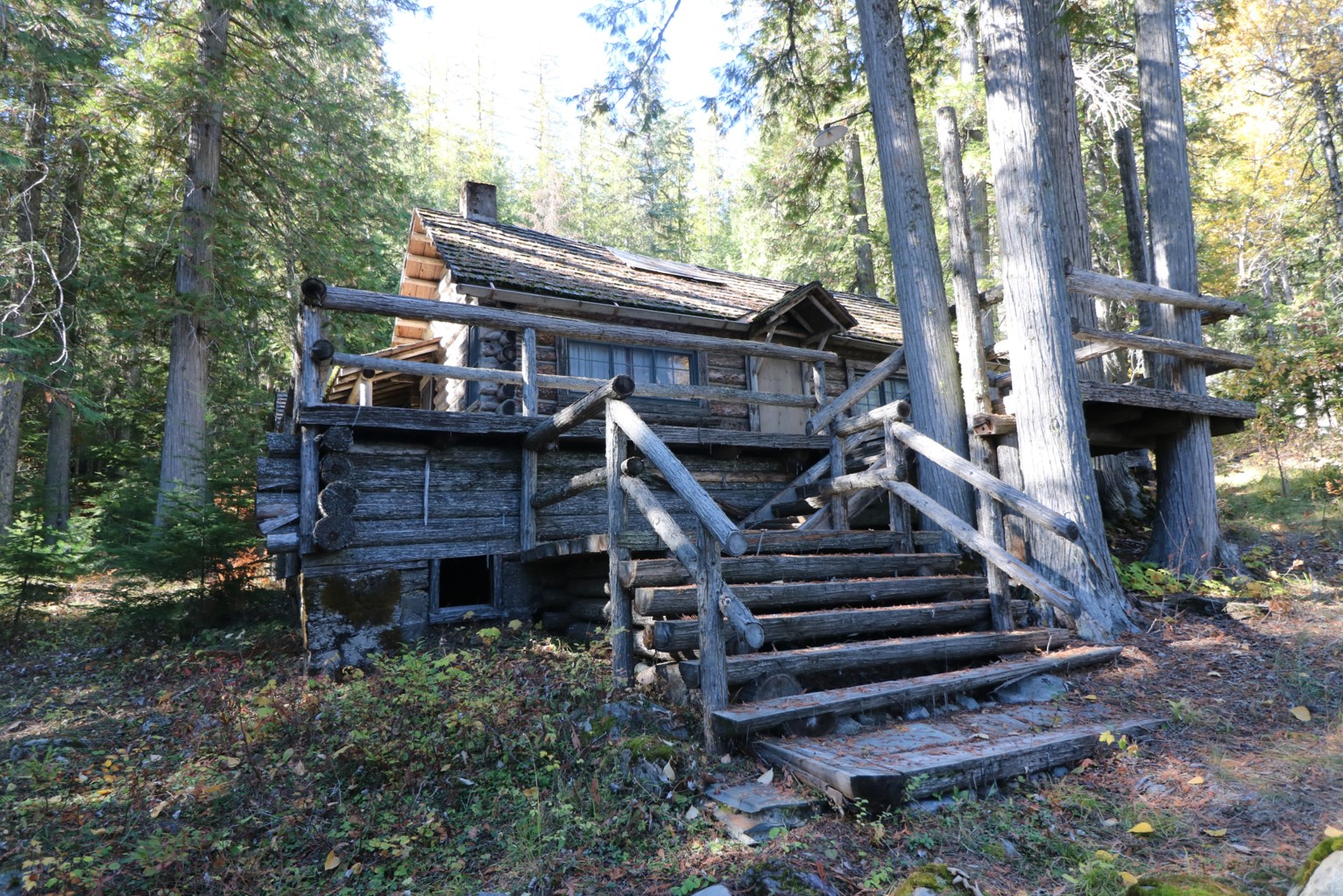
Bull Head Lodge as seen today.
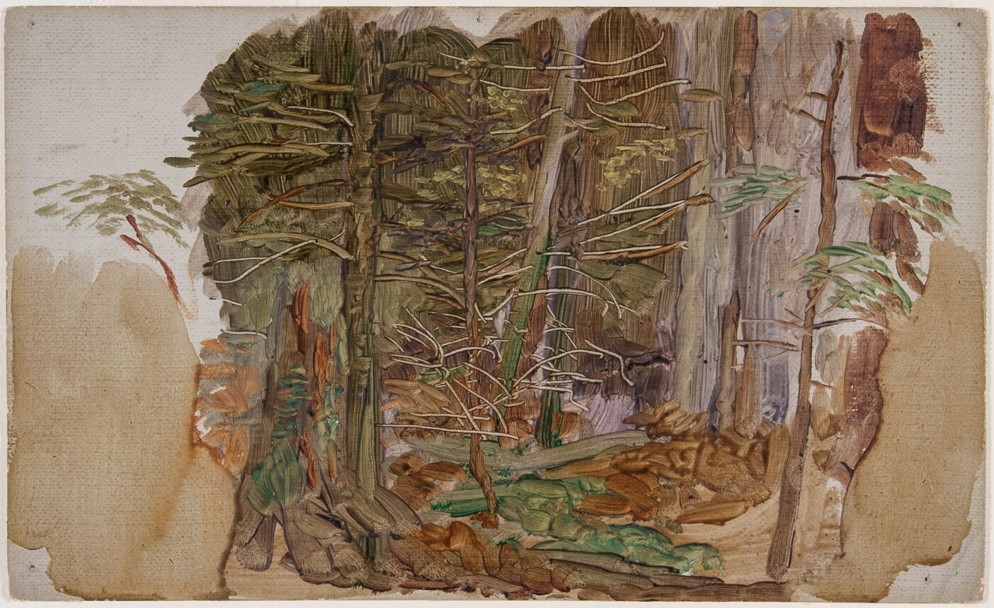
Charles M. Russell, [Cedar Glade, McDonald Valley], ca. 1910, oil on canvas, 5 ½ x 9 in., Amon Carter Museum of American Art, Fort Worth, Texas, Among G. Carter Collection by gift of C. R. Smith in 1946
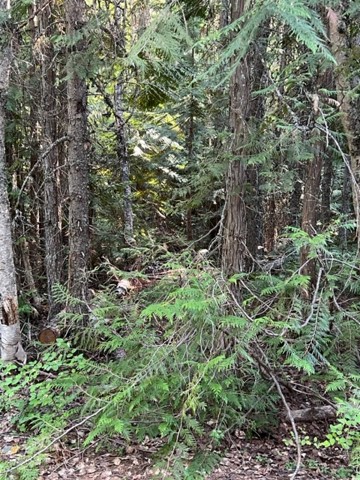
Dense forest scenery near Bull Head Lodge
How did Charlie & Nancy get to their cabin way out in the wilderness of northwestern Montana? Answer: the Great Northern Railway. Built in stages starting in 1889, the Great Northern Railway was the northernmost transcontinental railroad route in the U.S. From their home in Great Falls, the Russell’s were able to travel to Shelby and then took the train west to Glacier. It was a convenient little day trip.
The railway made a great impact on the region, opening access to Glacier National Park. With the establishment of the park in 1910, tourists began to flock to the area, and like any great manager, Nancy saw the opportunities that could bring in terms of patronage for Charlie’s artwork. In fact, many of Russell’s paintings were made into images for postage stamps promoting the Great Northern Railway.
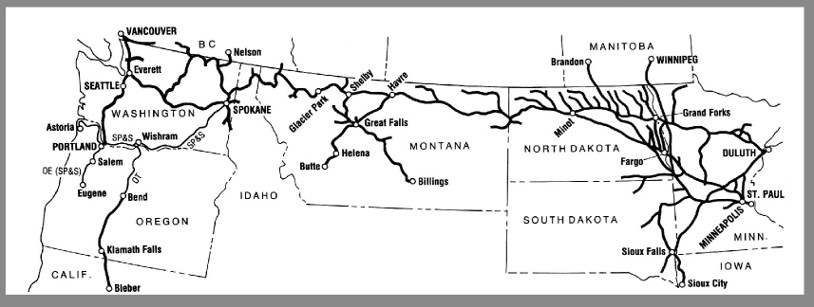
Map of routes of the Great Northern Railway
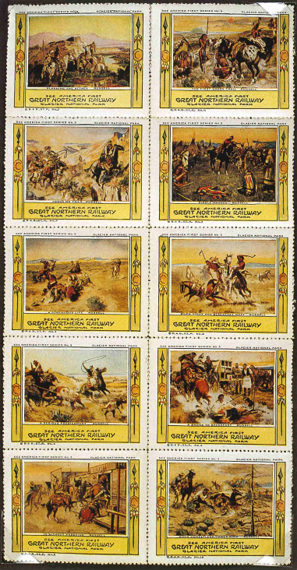
Great Northern Railway, “See America First Series No. 3,” sheet of 10 stamps with various Charles Russell paintings.
With its scenic location, Russell did a lot of work while at Bull Head Lodge. Even on the deck! The Russell’s hosted company constantly, and even while hosting guests Russell continued to paint.
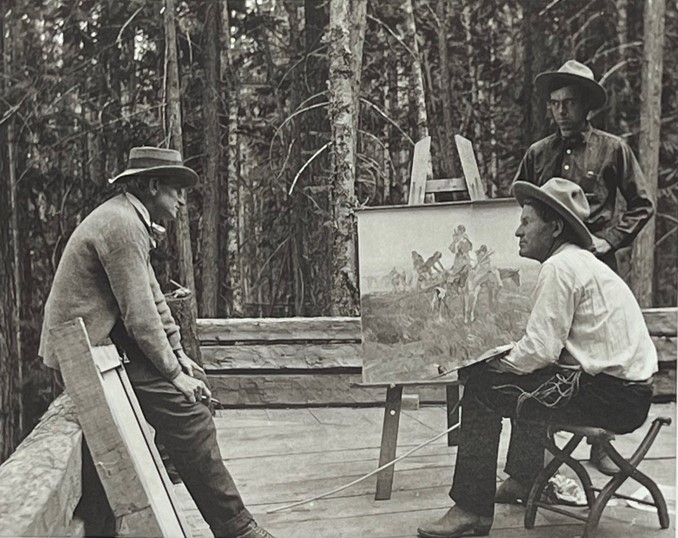
Fergus Mead, Russell, and Austin Russell at Bull Head Lodge, 1914, Helen E. and Homer E. Britzman Collection, TU2009.39.574.8b-c/D.1.446, Gilcrease Museum Archives, University of Tulsa
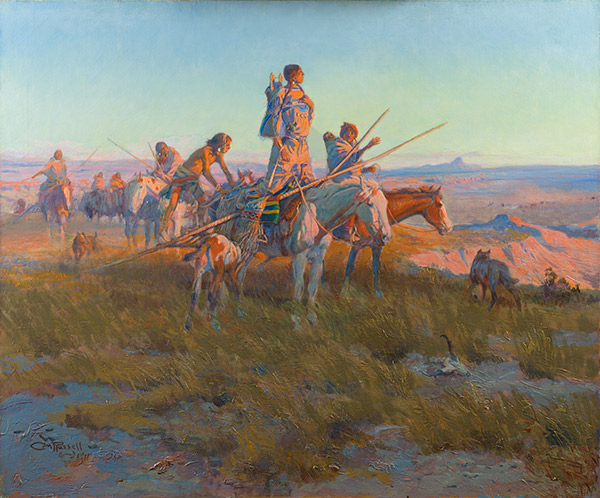
Charles M. Russell | In the Wake of the Buffalo Runners | 1911 | Oil on canvas | Private Collection
Within the surrounding wilderness of the Bull Head Lodge, Russell took inspiration from the landscape, as seen in the Sid Richardson Museum’s Deer in Forest (1917). Notice the mountain formations in the background of the painting. The hanging valley and waterfall most closely resemble Bird Woman Falls, the tallest waterfall in the park. The falls are viewable along Going to the Sun Road just west of the continental divide.
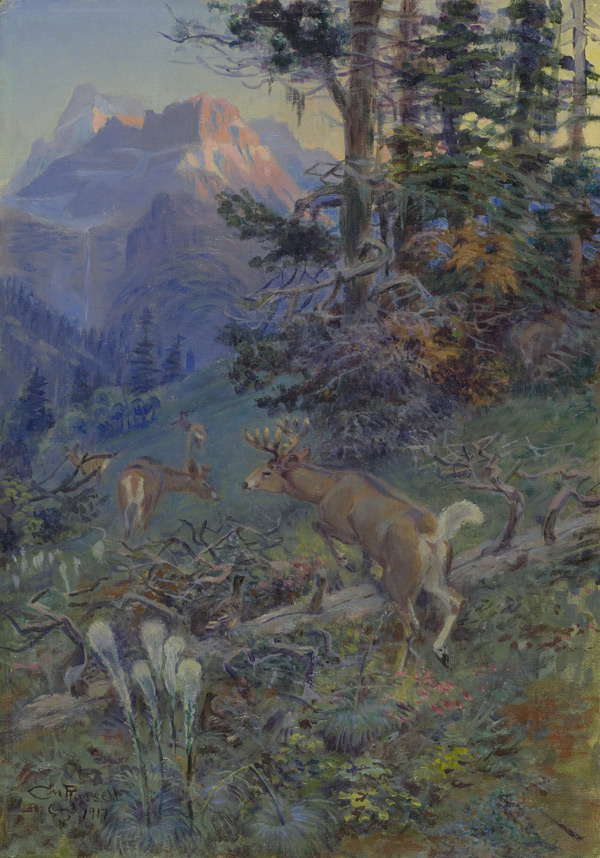
Charles M. Russell | Deer in Forest (White Tailed Deer) | 1917 | Oil on canvasboard | 14 inches x 9 7/8 inches
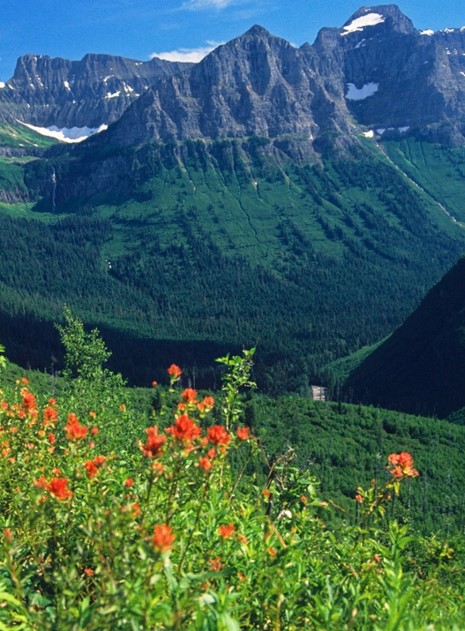
Bird Woman Falls
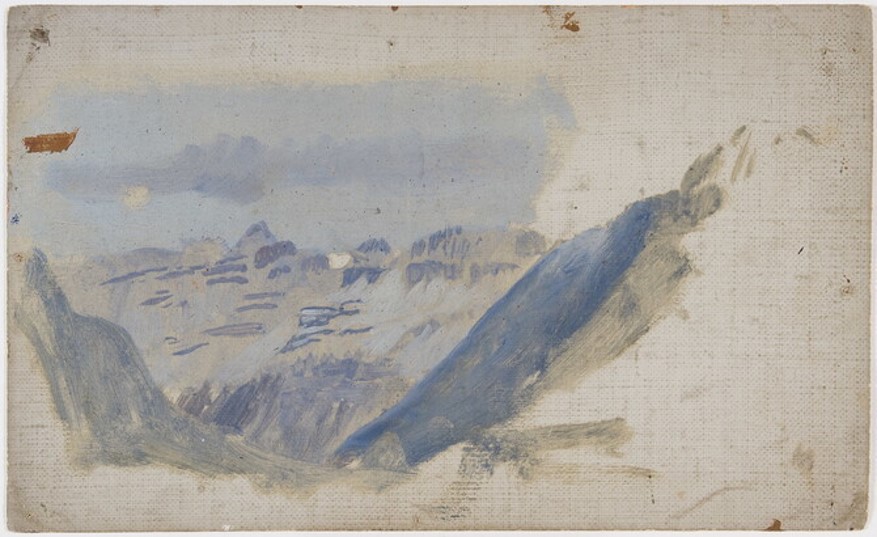
Charles M. Russell, [Mountains above Logan Pass from Lake McDonald], ca. 1910, oil on canvas, 5 ½ x 9 in., Amon Carter Museum of American Art, Fort Worth, Texas, Amon G. Carter Collection by gift of C. R. Smith in 1946
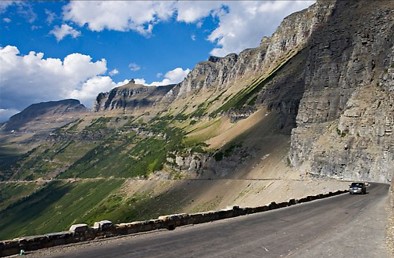
View of Logan Pass
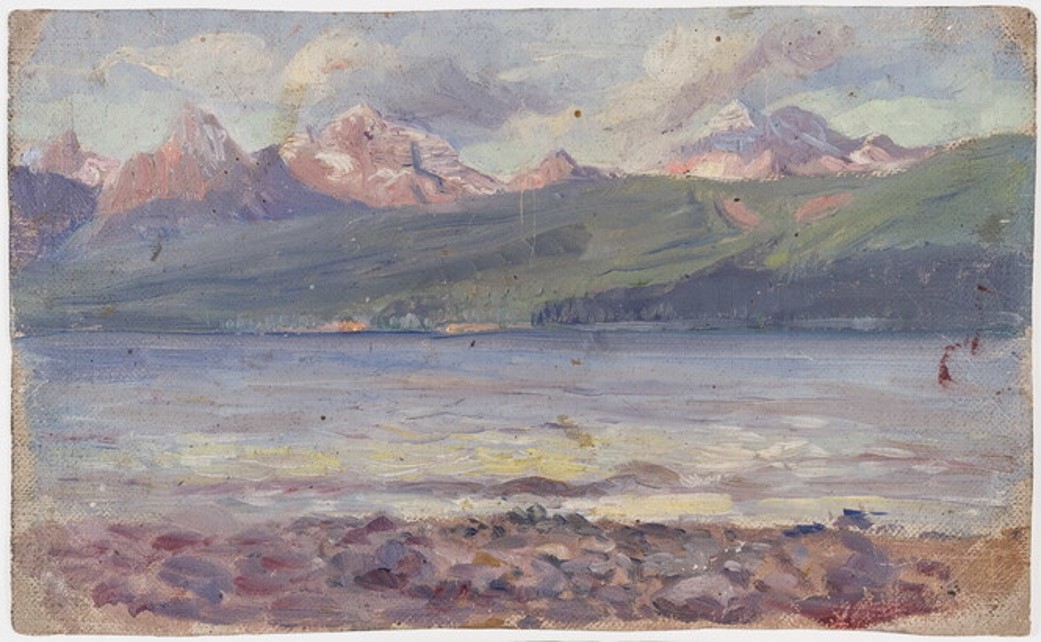
Charles M. Russell, [Reynolds Mountain and Mount Jackson, Glacier Park], ca. 1910, oil on canvas, 5 3/8 x 8 7/8 in., Amon Carter Museum of American Art, Fort Worth, Texas, Amon G. Carter Collection by gift of C. R. Smith in 1946
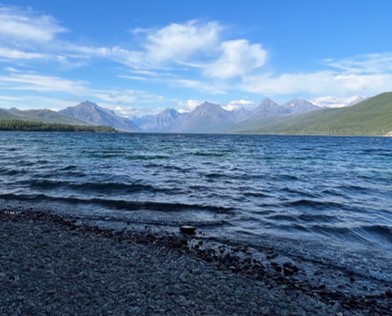
Reynolds Mountain
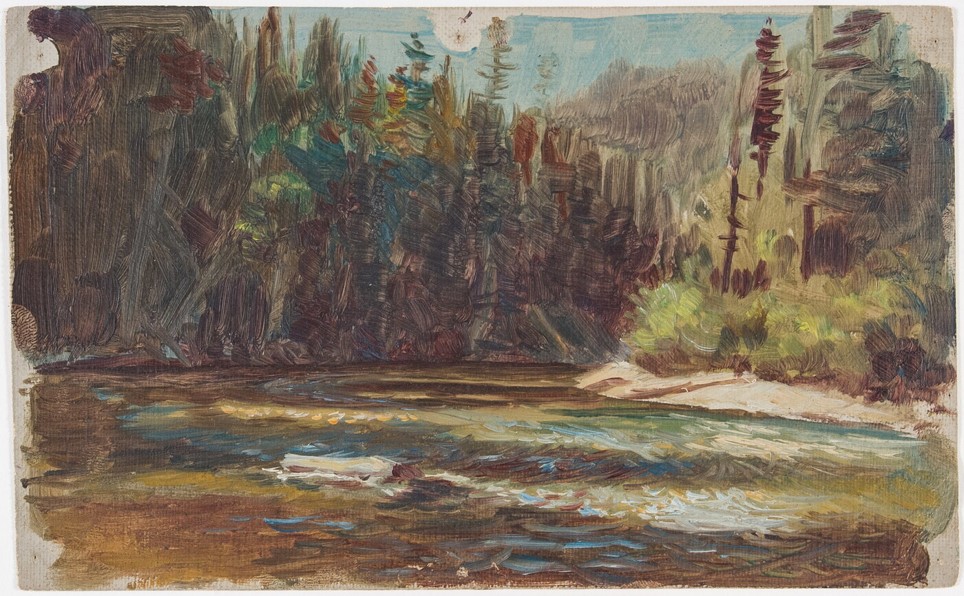
Charles M. Russell, [Forest and stream], ca. 1910, oil on canvas, 5 ½ x 9 in., Amon Carter Museum of American Art, Fort Worth, Texas, Amon G. Carter Collection by gift of C. R. Smith in 1946
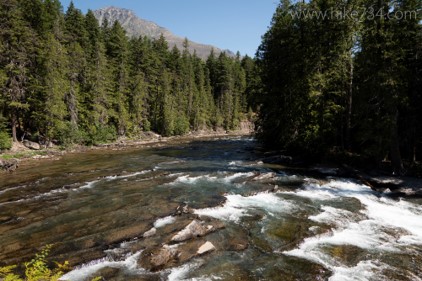
Forest and stream
From Glacier, Scott traveled to Russell’s home and museum in Great Falls. Along the way, he encountered more features commonly found in the background of Russell’s paintings: buttes.
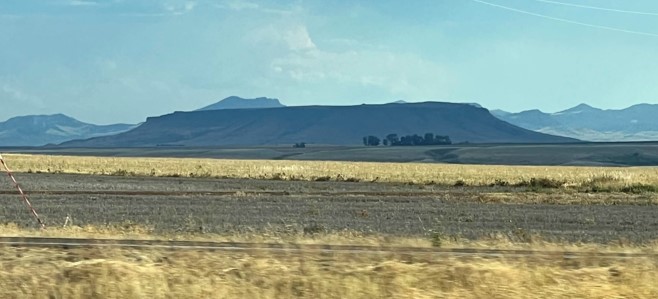
View of Square Butte located east of Hwy 15
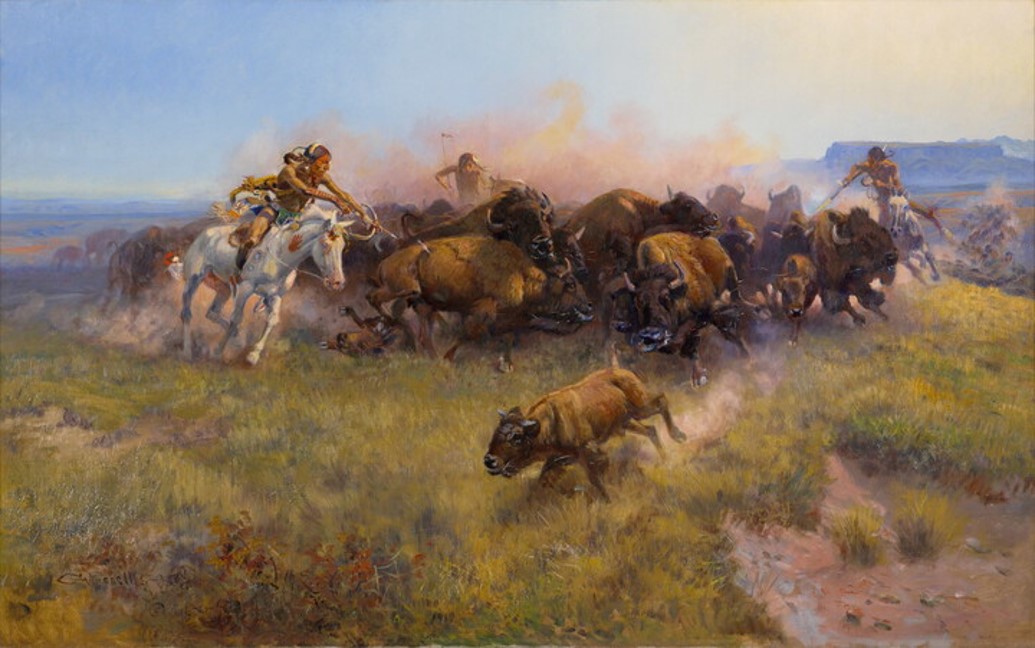
Charles M. Russell, The Buffalo Hunt [No. 39], 1919, oil on canvas, 30 1/8 x 48 1/8 in., Amon Carter Museum of American Art, Fort Worth, Texas, Amon G. Carter Collection
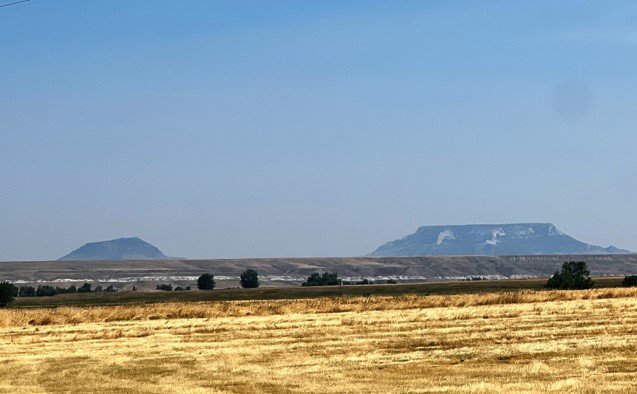
View of another Square Butte located Northeast of Geyser Mt. off Hwy 87
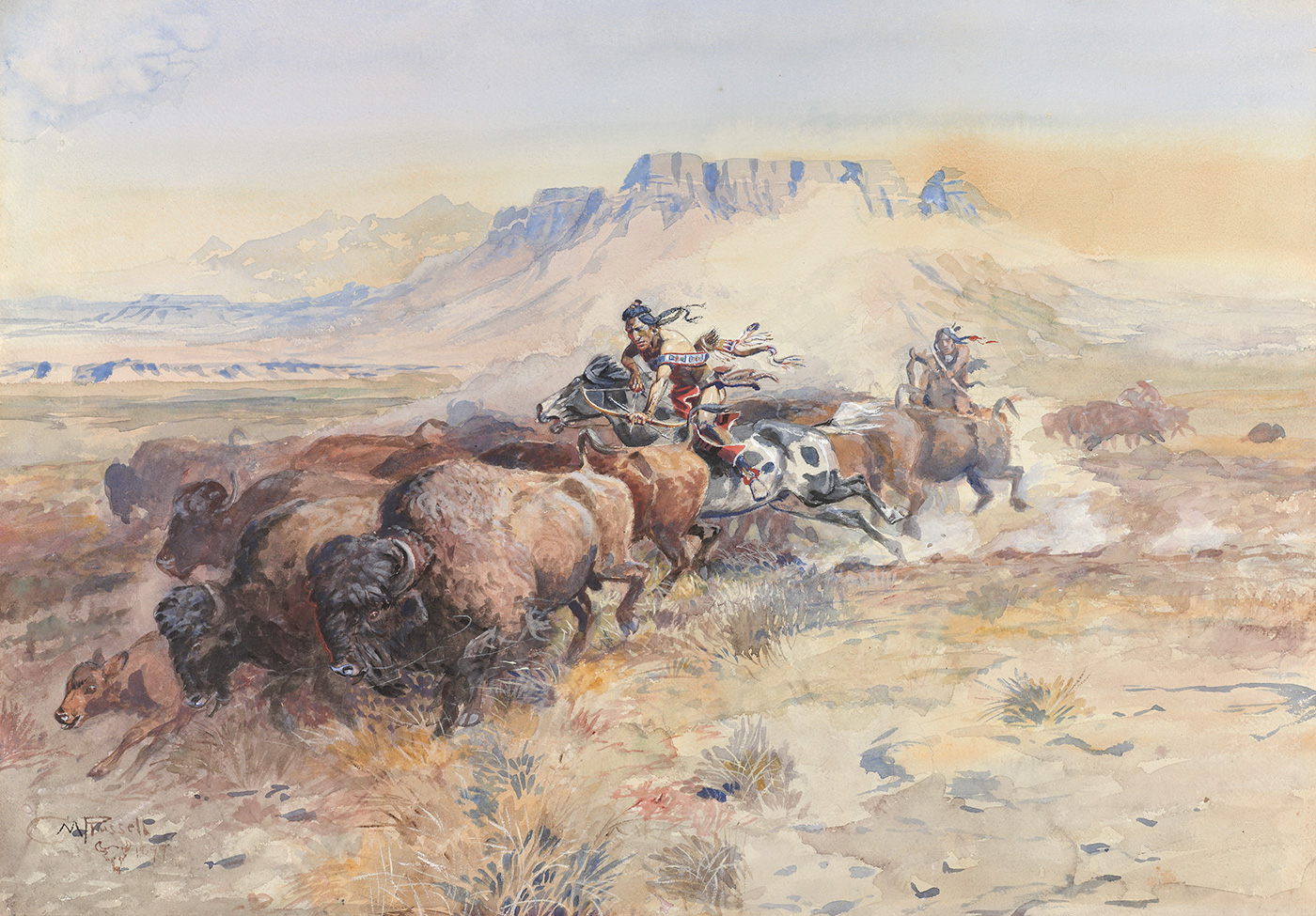
Charles M. Russell | Wild Man’s Meat (Redman’s Meat) | 1899 | Pencil, watercolor and gouache on paper | 21 x 30 inches
Traveling around Charlie Russell Country, aka Montana, allowed our director to see first-hand the many views once experienced by the cowboy artist himself. Through these photos and accompanying stories, seeing the sites of inspiration has really helped us, as a staff based in Texas, place the landscapes Russell was thinking about in many of his paintings, housed both here at the Sid Richardson Museum and in collections around the country.



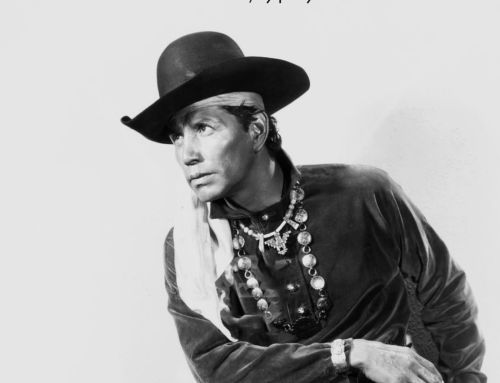
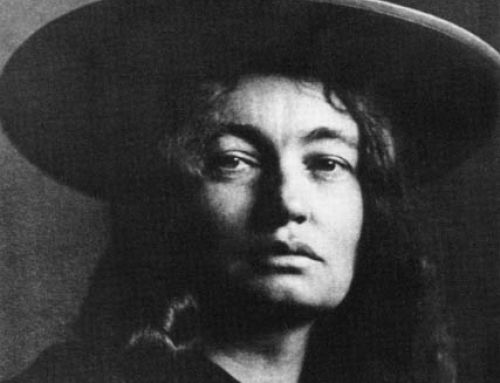
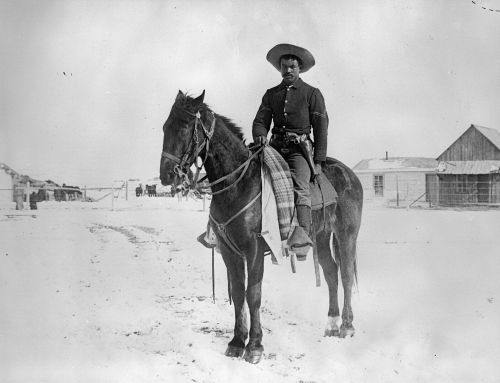
Leave A Comment